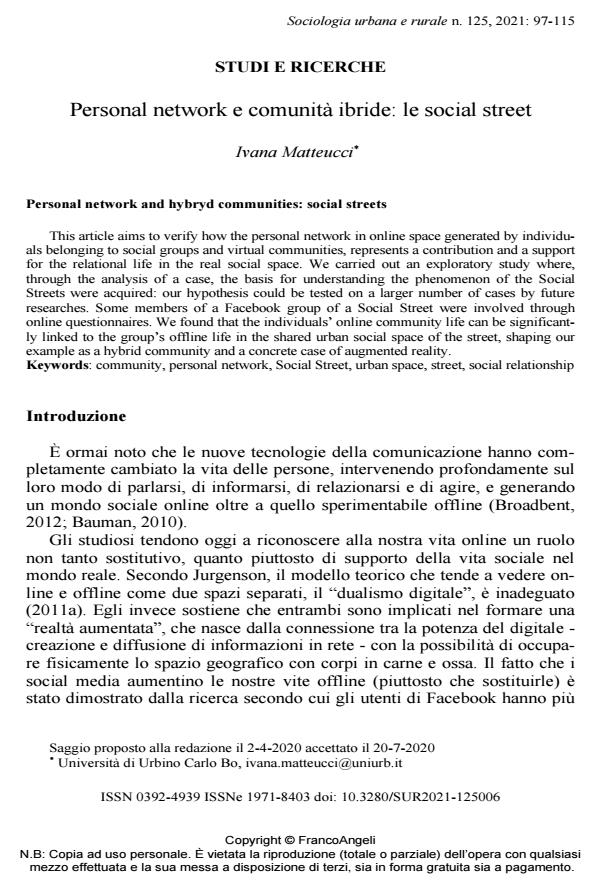Personal network and hybryd communities: social streets
Journal title SOCIOLOGIA URBANA E RURALE
Author/s Ivana Matteucci
Publishing Year 2021 Issue 2021/125
Language Italian Pages 19 P. 97-115 File size 322 KB
DOI 10.3280/SUR2021-125006
DOI is like a bar code for intellectual property: to have more infomation
click here
Below, you can see the article first page
If you want to buy this article in PDF format, you can do it, following the instructions to buy download credits

FrancoAngeli is member of Publishers International Linking Association, Inc (PILA), a not-for-profit association which run the CrossRef service enabling links to and from online scholarly content.
This article aims to verify how the personal network in online space generated by individu-als belonging to social groups and virtual communities, represents a contribution and a support for the relational life in the real social space. We carried out an exploratory study where, through the analysis of a case, the basis for understanding the phenomenon of the Social Streets were acquired: our hypothesis could be tested on a larger number of cases by future researches. Some members of a Facebook group of a Social Street were involved through online questionnaires. We found that the individuals’ online community life can be significant-ly linked to the group’s offline life in the shared urban social space of the street, shaping our example as a hybrid community and a concrete case of augmented reality.
Keywords: Community, personal network, Social Street, urban space, street, social relationship
Ivana Matteucci, Personal network e comunità ibride: le social street in "SOCIOLOGIA URBANA E RURALE" 125/2021, pp 97-115, DOI: 10.3280/SUR2021-125006